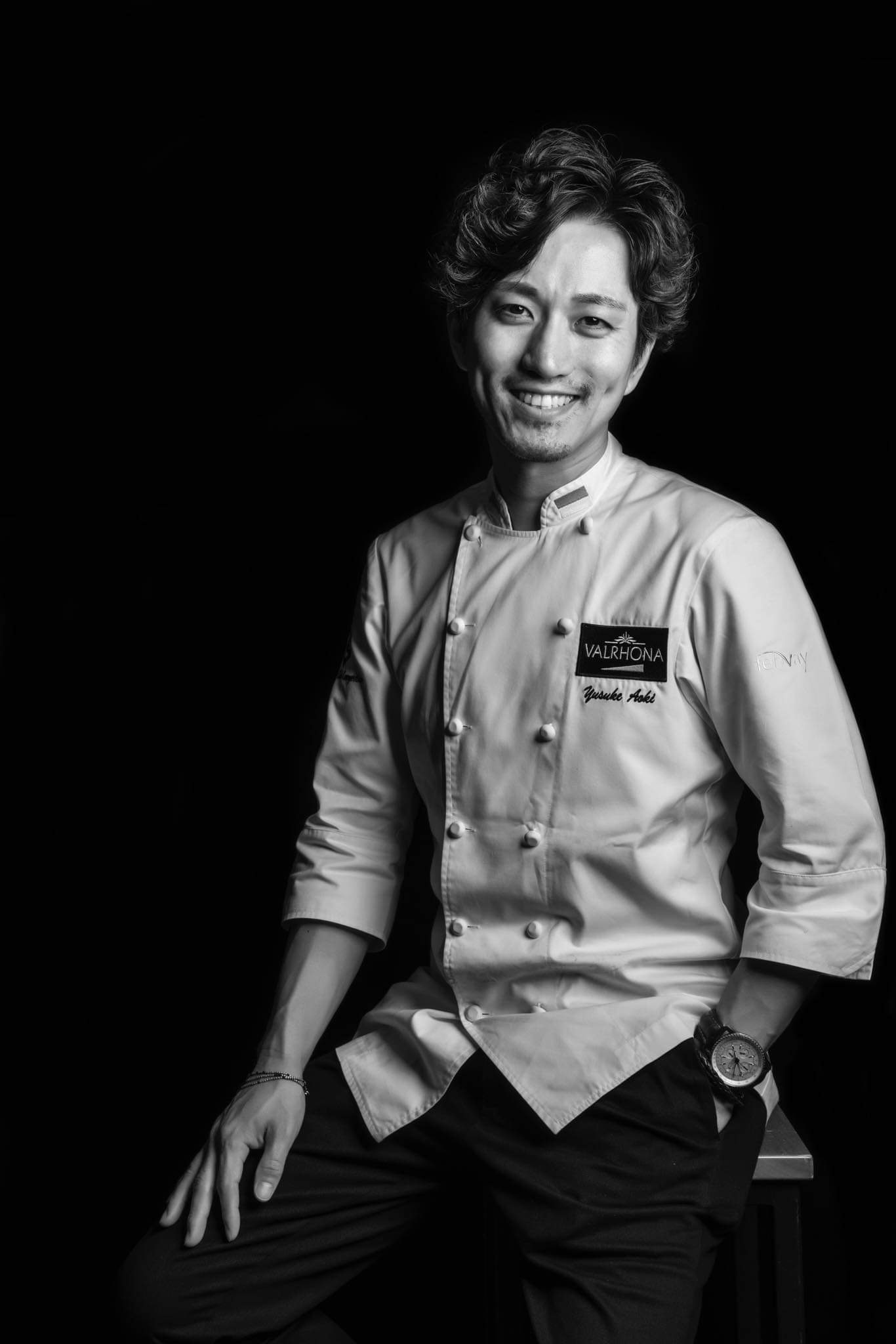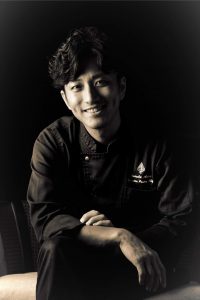
After having sharpened senses and skills all around the world, the 37-year-old winner of the Valrhona C3 competition (2018 edition) Yusuke Aoki is back in Japan. The birthplace of this World Pastry Champion is setting the start of a big new challenge.
- How did your career start?
After graduating at the Pastry Art College in Kyoto, I learnt the basics of French pastries, tarts, cakes and viennoiserie while working at the French Patisserie “Petit Point” (Kyoto). Then I had a chance to move to the Hotel Business in Tokyo. I started learning how to create wedding cakes, chocolate works, ice cream and restaurant desserts. I joined the Ritz Carlton Tokyo Japan’s opening team in 2007, working in the chocolate production team. I had to create bonbons and chocolate decorations for the shops and restaurants. I wanted to become an International Pastry Chef, so I started working as pastry chef abroad. Ten years of experience, creativity and a global mindset in luxury hotels such as Ritz Carlton and Four Seasons – from Toronto (Canada) to Paris (France), Doha (Qatar) and Bali (Indonesia) – inspired me to start a new pathway in my homeland. Especially the MOF Stéphane Glacier made me understand this. It’s time to challenge myself and indulge the very high demand of Japanese guests.
- You are now overseeing the pastry program at the Four Seasons Hotel Tokyo at Otemachi. Did you dream of this kind of job when you were a kid?
During my childhood, I was always watching my mom cooking at home and I was helping her if allowed. It was so natural and fun being in the kitchen, that I decided to sign up at the Kyoto Culinary College after finishing my high school. I wanted to develop some hands-on skills. I immediately felt in love with pastry art. I love precision and details; cake and tart decoration was my favourite task. So, I decided to become a pastry chef. Fortunately, there are quite some first-class Japanese chefs who learnt pastry in France and modernised it into French Japanese style pastry. We are highly focused on perfection and craftsmanship in Japan. Our culture teaches us to bring gifts (“Omiyage”) when visiting someone’s place, so we do our best abroad and our proud attitude helps in bringing back home the high standards of pastry and packaging.
3. That explains why Japanese Pastry is at Top World Levels! And what about Frozen Art?
When I was in Italy, I discovered that gelato and frozen desserts represent real cultural treats. Everybody craves for them and eats them on almost a daily basis. Japanese people are not so familiar with frozen cakes/desserts but during our childhood we eat lots of ice cream (or maybe gelato). It’s a must-have. Desserts in Glass (we call them “Parfait”) are actually the most popular way to enjoy gelato and sorbets made with seasonal fruits and many different layers of texture. You get all in one glass.
4. Parfait…we love it! Could you share with us one of your latest creations?
Of course. In these last challenging months, I loved working with Chocolate, that is a renowned anti-depression ingredient. This is the season of figs so… I hope that Frozen Art Chef lovers will enjoy my “Chocolate Smoked Fig” now.
5. Which is your advice to all the aspiring pastry chefs?
I always remind my young colleagues that we selected a very tough job. The question is: “do you really love pastry art? Rest assured that you will face stress and high-pressure but once you got a goal to achieve, then just focus on it”. Today there are multiple international opportunities to expand your future as pastry chef, as well as many ways to express your creativity using technologically advanced tools and equipment. Everyone has got the chance to become a successful pastry chef, with determination, passion and hard work.
6. And the trend will be “Parfait”!
Yes, in Japan “Parfait dessert” will keep booming. It’s so fun enjoying the creativity and the combination of seasonal flavours, gelato or sorbet in cafés and casual restaurants. It’s smart if you look for low glycaemic index and healthier treats. Well, that is the biggest benefit of Parfait. You will get less sugar, and you will find extraordinary vegan or gluten free recipes. Nowadays, there is a high demand for these frozen desserts, and I’m sure it will increase more. Cakes made with rice flour are also getting extremely popular. Many pastry shops are making their sweets without wheat flour, and rice flour is a good alternative.
7. Last Question. You recently declared that one of your new challenges is to create something unique without a mould. Tell us more about it.
While working in tropical countries (ex. Bali), I had to adjust my recipes for temperature-controlled patisserie. And when you operate in remote nations, you certainly don’t have an easy access to ingredients as in Japan or Europe. You can’t find a wide range of gelatine and agar products. In the last years I started to add pectin or corn starch to keep the shape of jelly or crémeux in such hot weather. The limited selection of fruits also stimulated me to use exotic spices and homemade praliné instead of accenting flavours and textures. I’m not in a tropical country now but mould represents an issue everywhere (especially during the hot season) and I want to go ahead in researching and testing unique products.
Editor’s Note
The word “parfait” actually means “perfect” in French. The origin of parfait can be traced back to references of a dessert in French cuisine in 1894. They are most often prepared in tall glasses known as parfait glasses and are typically made with layers of ingredients. Today, parfait refers to a frozen dessert made from a base of sugar syrup, egg, and cream. A parfait contains enough fat, sugar, alcohol, and/or, to a lesser extent, air to allow it to be made by stirring infrequently while freezing. Most parfaits are filled with some kind of yogurt, layered with fruit and granola, and packed with protein and other nutrients. Unlike protein bars, these kinds of parfaits are a healthy breakfast or snack to eat when on-the-go.



